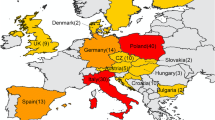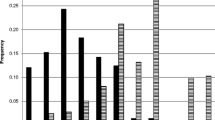Abstract
Raptors are the most prevalent group of urban apex predators, and the majority of raptor genera in North America have been recorded using urban areas. Prior research assessments along urban-wildland gradients show that urban habitat preference varies by raptor species and that raptor nesting preferences within urban settings may vary. Attempts to understand the intra- and inter-specific nesting patterns along an urban gradient would advance extant knowledge. Here we present the locations of individual nest sites of nine raptor species along an urban gradient in Reno-Sparks, NV. We developed an urban density model based on the number of residents, number of employees, and building footprints and number of floors for built structures within each land parcel at four spatial scales, representing nest site, macrohabitat, average nearest-nest, and landscape scales. Cooper’s Hawks (Accipiter cooperii), Sharp-shinned Hawks (Accipiter striatus), and Red-tailed Hawks (Buteo jamaicensis) nested across the widest range of the urban spectrum and closest to the urban core, whereas Golden Eagles (Aquila chrysaetos) and Swainson’s Hawks (Buteo swainsonii) nested on the urban fringe. Urban density for all nest locations was lowest at the nest-site scale, and the highest at the average nearest-nest and landscape scales. Raptors tended to occupy a wide range of the building-area density spectrum but not the building-height or employee density spectrums indicative of the attractiveness of suburban habitat.








Similar content being viewed by others
References
Berry ME, Bock CE, Haire SL (1998) Abundance of diurnal raptors on open space grasslands in an urbanized landscape. Condor 100:601–608
Bloom PH, McCrary MD (1996) The urban Buteo: Red-shouldered hawks in southern California. In: Bird DM, Varlan DE, Negro JJ (eds) Raptors in human landscapes: Adaptations to built and cultivated environments. Academic Press Limited, London, pp 31–39
Boal CW, Mannan RW (1998) Nest-site selection by Cooper’s hawks in an urban environment. J Wildl Manag 62(3):864–871
Boal CW, Mannan RW (1999) Comparative breeding ecology of Cooper’s hawks in urban and exurban areas of southeastern Arizona. J Wildl Manag 63(1):77–84
Bosakowski T, Smith DG (1997) Distribution and species richness of a forest raptor community in relation to urbanization. J Raptor Res 31(1):26–33
Cade TJ, Martell M, Redig P, Septon G, Tordoff H (1996) Peregrine falcons in urban North America. In: Bird DM, Varlan DE, Negro JJ (eds) Raptors in human landscapes: Adaptations to built and cultivated environments. Academic Press Limited, London, pp 3–13
Cava JA, Stewart AC, Rosenfield RN (2012) Introduced species dominate the diet of breeding urban Cooper’s hawks in British Columbia. Wilson J Ornithol 124(4):775–782
Chace JF, Walsh JJ (2006) Urban effects on native avifauna: a review. Landsc Urban Plan 74(1):46–69
Cooke R, Wallis R, Hogan F, White J, Webster A (2006) The diet of powerful owls (Ninox strenua) and prey availability in a continuum of habitats from disturbed urban fringe to protected forest environments in south-eastern Australia. Wildl Res 33(3):199–206
Crooks KR (2002) Relative sensitivities of mammalian carnivores to habitat fragmentation. Conserv Biol 16(2):488–502
Crooks KR, Soulé M (1999) Mesopredator release and avifaunal extinctions in a fragmented system. Nature 400:563–566
Crooks KR, Suarez A, Bolger D (2004) Avian assemblages along a gradient of urbanization in a highly fragmented landscape. Biol Conserv 115(3):451–462
Dawson JW, Mannan RW (1995) Electrocution as a mortality factor in an urban population of Harris’ hawks. J Rapt Res 29:55
Dykstra CR, Simon MM, Daniel FB, Hays JL (2012) Habitats of suburban barred owls (Strix varia) and red-shouldered hawks (Buteo lineatus) in Southwestern Ohio. J Rapt Res 46(2):190–200
England AS, Estep JA, Holt WR (1995) Nest-site selection and reproductive performance of urban-nesting Swainson’s Hawks in the central valley of California. J Rapt Res 29(3):179–186
England AS, Bechard MJ, Houston CS (1997) Swainson’s Hawk (Buteo swainsonii). In: Poole A (ed) The birds of North America online. Cornell Lab of Ornithology, Ithaca
ESRI (2016) ArcGIS Desktop: 10.4. Environmental Systems Research Institute, Redlands
Estes WA, Mannan RW (2003) Feeding behavior of Cooper’s hawks at urban and rural nests in southeastern Arizona. Condor 105(1):107–116
Garaffa PI, Filloy J, Bellocq M (2009) Bird community responses along urban–rural gradients: Does the size of the urbanized area matter? Landscape Urban Plan 90(1–2):33–41
Gilmer DS, Stewart RE (1983) Ferruginous hawk populations and habitat use in North Dakota. J Wildl Res 47(1):146–157
Hager S (2009) Human-related threats to urban raptors. J Rapt Res 43(3):210–226
Hardcastle J (2010) Nevada county population projections 2010 to 2030. Nevada State Demographer, pp 1–7. Available at: https://tax.nv.gov/Publications/Population_Statistics_and_Reports/
Hepinstall-Cymerman J, Coe S, Alberti M (2009) Using urban landscape trajectories to develop a multi-temporal land cover database to support ecological modeling. Remote Sens 1(4):1353–1379
Kristan WB, Boarman WI, Crayon JJ (2004) Diet composition of common ravens across the urban-wildland interface of the West Mojave Desert. Wildl Soc Bull 32(1):244–253
Loos G, Kerlinger P (1993) Road mortality of saw-whet and screech owls on the Cape May Peninsula. J Rapt Res 27(4):210–213
Love OP, Bird DM (2000) Raptors in urban landscapes: A review and future concerns. In: Chancellor RD, Meyburg BU (eds) Raptors at risk: Proceedings of the 5th world conference on birds of prey and owls. World Working Group on Birds of Prey and Owls, Berlin, pp 425–434
Luniak M (2004) Synurbanization—adaptation of animal wildlife to urban development. In: Shaw WW, Harris LK, Vandruff L (eds) Proceedings of the 4th International Urban Wildlife Symposium. University of Arizona, Tucson, pp 50–55
Mannan RW, Boal CW (2000) Home range characteristics of male Cooper’s hawks in an urban environment. Wilson Bull 112(1):21–27
Mannan RW, Boal CW, Burroughs WJ, Dawson JW, Estabrook TS, Richardson WS (2000) Nest sites of five raptor species along an urban gradient. In: Chancellor RD, Meyburg BU (eds) Raptors at risk. Hancock House Publisher, Ltd., Surrey, pp 447–453
Mannan RW, Steidl RJ, Boal CW (2008) Identifying habitat sinks: A case study of Cooper’s hawks in an urban environment. Urban Ecosyst 11(2):141–148
Marti CD, Kochert MN (1995) Are red-tailed hawks and great horned owls diurnal-nocturnal dietary counterparts? Wilson Bull 107(4):615–628
Marzluff JM (2005) Island biogeography for an urbanizing world: how extinction and colonization may determine biological diversity in human-dominated landscapes. Urban Ecosyst 8(2):157–177
Meffe GK (1997) Principles of conservation biology. Sinauer Ass. Inc. Publ, Sunderland
Meyburg B, Manowsky O, Meyburg C (1996) The osprey in Germany: its adaptation to environments altered by man. In: Bird DM, Varlan DE, Negro JJ (eds) Raptors in human landscapes: Adaptations to built and cultivated environments. Academic Press Limited, London, pp 125–135
Minor WF, Minor M, Ingraldi MF (1993) Nesting of red-tailed hawks and great-horned owls in a central New York urban/suburban area. J Field Ornithol 64(4):433–439
Morrison JL, Gottlieb I, Pias KE (2016) Spatial distribution and the value of green spaces for urban red-tailed hawks. Urban Ecosyst 19(3):1–16
Park JW (1996) Urban ecology of the Mississippi kite. In: Bird DM, Varlan DE, Negro JJ (eds) Raptors in Human Landscapes: Adaptations to Built and Cultivated Environments. Academic Press Limited, London, pp 45–52
Phillips RL, McEneaney TP, Beske AE (1984) Population densities of golden eagles in Wyoming. Wildl Soc Bull 12(3):269–273
Poole AF, Bierregaard RO, Martell MS (2002) Osprey (Pandion haliaetus). In: Poole A (ed) The birds of North America online. Cornell Lab of Ornithology, Ithaca
R Core Project (2016) The R project for statistical computing. Available at www.R-project.org/. Accessed 14 Jan 2017
Rodgers AR, Carr AP, Beyer HL, Smith L, Kie JG (2007) HRT: Home range tools for ArcGIS. Centre for Northern Forest Research, Ontario Ministry of Natural Resources, Ontario
Rosenfield RN, Bielefeldt J, Affeldt JL, Beckmann DJ (1996) Urban nesting biology of Cooper’s hawks in Wisconsin. Raptors in human landscapes, Academic Press, London, pp 41–44
Roth TC, Lima SL, Vetter WE (2005) Survival and causes of mortality in wintering sharp-shinned hawks and Cooper’s hawks. Wilson Bull 117:237–244
Rottenborn SC (2000) Nest-site and reproductive success of urban red-shouldered hawks in central California. J Rapt Res 34(1):18–25
Rullman S, Marzluff J (2014) Raptor presence along an urban-wildland gradient: Influences of prey abundance and land cover. J Rapt Res 48(3):257–272
Rutz C (2006) Home range size, habitat use, activity patterns and hunting behaviour of urban-breeding Northern Goshawks Accipiter gentilis. Ardea 94(2):185–202
Scheaffer RL, Mendenhall W, Ott L (1996) Elementary Survey Sampling. Duxbury Press, Boston, p 324
Scott TA (1985) Human impacts on the golden eagle population of San Diego County from 1928 to 1981. MS Thesis, San Diego State University
Smith DG, Bosakowski T, Divine A (1999) Nest site selection by urban and rural great horned owls in the Northeast. J Field Ornitho 70(4):535–542
Smith SB, McKay JE, Richardson JK, Murphy MT (2012) Edges, trails, and reproductive performance of Spotted Towhees in urban greenspaces. In: Lepczyk CA, Warren PS (eds) Urban bird ecology and conservation. University of California Press, Los Angeles, pp 167–182
Sorace A (2002) High density of bird and pest species in urban habitats and the role of predator abundance. Ornis Fenn 79(1):60–71
Sorace A, Gustin M (2009) Distribution of generalist and specialist predators along urban gradients. Landsc Urban Plan 90(3):111–118
Spitzer PR, Poole AF, Sceibel M (1985) Initial population recovery of breeding ospreys (Pandion haliaetus) in the region between New York City and Boston. In: Ilyichev VD, Gavrilov VM (Eds), Proceedings of the 18th International Ornithological Congress, Moscow, pp 705–714
Stout W, Anderson R, Papp J (1998) Urban, suburban, and rural red-tailed hawk nesting habitat and populations in southeast Wisconsin. J Rapt Res 32(3):221–228
Stout WE, Temple SA, Cary JR (2006a) Landscape features of red-tailed hawk nesting habitat in an urban/suburban environment. J Rapt Res 40(3):181–192
Stout WE, Temple SA, Papp JM (2006b) Landscape correlates of reproductive success for an urban-suburban red-tailed hawk population. J Wildl Manag 70(4):989–997
Sweeney SJ, Redig PT, Tordoff HB (1997) Morbidity, survival and productivity of rehabilitated peregrine falcons in the upper mid-western U.S. J Rapt Res 31(4):347–352
Tella JL, Hiraldo F, Donazar-Sancho JA, Negro JJ (1996) Costs and benefits of urban nesting in the Lesser Kestrel. In: Bird DM, Varlan DE, Negro JJ (eds) Raptors in human landscapes: Adaptations to built and cultivated environments. Academic Press, London, pp 53–59
Tordoff HB, Redig PT (1997) Midwest peregrine falcon demography, 1982-1995. J Rapt Res 31(4):339–346
Trammell EJ (2011) Avian urban ecology: Conservation planning opportunities for Reno, NV, USA. Dissertation, University of Nevada, Reno
Treves A, Karanth KU (2003) Human-carnivore conflict and perspectives on carnivore management worldwide. Conserv Biol 17(6):1491–1499
Truckee Meadows Regional Planning Agency (2016a) Washoe County Consensus Forecast 2016–2036. Reno
Truckee Meadows Regional Planning Agency (2016b) Truckee Meadows Housing Study. Reno
United States Census Bureau (2015) Quick Facts http://www.census.gov/quickfacts/table/PST045215/3268400,3260600. Accessed 20 Feb 2017
Washoe County Assessor (2014) On-line Data https://www.washoecounty.us/assessor/online_data/. Accessed 10 Dec 2014
Webster CM, DeStefano S (2004) Using public surveys to determine the distribution of greater roadrunners in urban and suburban Tuscon, Arizona. In: Shaw WW, Harris LK, Vandruff L (eds) Proceedings of the 4th International Urban Wildlife Symposium. University of Arizona, Tucson, pp 69–77
Whelan CJ, Wenny DG, Marquis RJ (2008) Ecosystem services provided by birds. Ann N Y Acad Sci 1134:25–60
Woodroffe R (2000) Predators and people: Using human densities to interpret declines of large carnivores. Anim Conserv 3(2):165–173
Zalewski A (1994) Diet of urban and suburban tawny owls in the breeding season. J Rapt Res 28(4):246–252
Acknowledgements
We thank Drs. Peter Bloom and Jeff Lincer for their insight, mentorship, and contributions to this work. Their support and guidance were instrumental in completing this research. We are also grateful to our funders Geodactics and Researchers Implementing Conservation Action. Lastly, we thank the anonymous reviewers for their constructive comments.
Author information
Authors and Affiliations
Corresponding author
Rights and permissions
About this article
Cite this article
White, J.H., Smith, J.M., Bassett, S.D. et al. Raptor nesting locations along an urban density gradient in the Great Basin, USA. Urban Ecosyst 21, 51–60 (2018). https://doi.org/10.1007/s11252-017-0705-y
Published:
Issue Date:
DOI: https://doi.org/10.1007/s11252-017-0705-y




